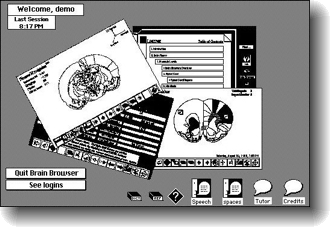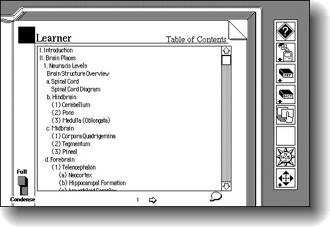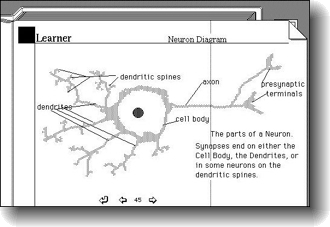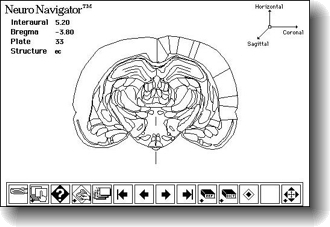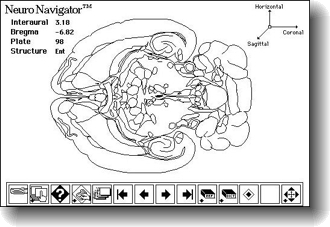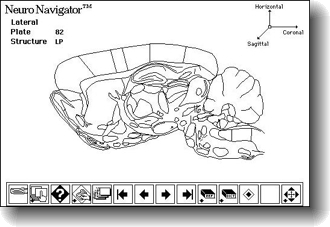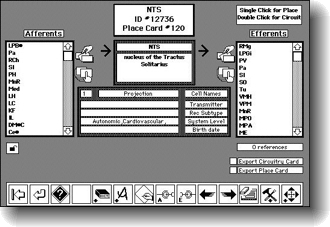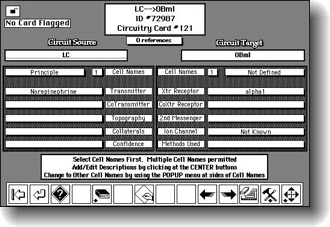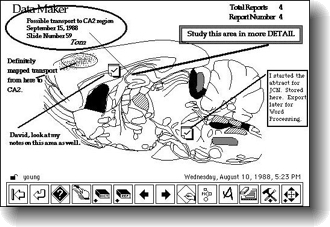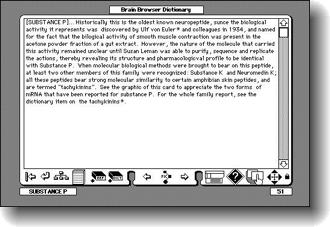Neurosciences
Brain Browser
Client - Academic Press
Internet Based Scientific Manuscript System (V2)
(Circa 1989) Brain Browser is a Macintosh Hypercard® system and a Windows SuperCard® system for learning basic neuroanatomy, for displaying brain atlas tissue sections, for user-entry of
neuroanatomic data, and for the databasing, categorization, and classification of neuronal structures and circuits. It is designed to assist researchers and beginning and advanced
neuroscience students in their efforts to organize, analyze, and contribute to the growing, detailed knowledge of the brain. Brain Browser serves as an electronic notebook for neuroanatomy
and offers numerous educational and research applications.
Original Data
For the Student of Neuroscience
- Learn the organization and structure of the brain
- Get data-overload under control
- Organize your knowledge of brain function and structure
- Store neuroanatomical references and terms in an efficient manner
- Develop a more efficient and organized way to write papers and do research
- Begin to effectively relate and analyze your data
For the Advanced Neuroscientist
- Add your own experimental results and build a personal database
- Organize and recall multiple items of complex interrelated data important to you and your work
- Interchange and share data with your colleagues and other labs
Brain Browser consists of four main Hypercard stacks:
The Learner
A brief introductory survey that introduces beginning students to the hierarchical and macroscopic organization of the rat brain, and provides an elementary coverage of the concepts of
cells, circuits and neurotransmitters.
The Neuro Navigator
A computer version of the atlas, "The Rat Brain" by George Paxinos and Charles Watson, Academic Press, 2nd Edition, 1987. The Neuro Navigator rapidly displays the different
schematics of the atlas in coronal, sagittal, and horizontal views and allows the user to rapidly search for any brain structure.
The Linker
An extensive database of neuronal circuitry that builds upon the concept of brain places introduced in The Learner and as illustrated by The NeuroNavigator. The types of cells, the
transmitters and the receptors, the associated functional systems, and the afferent and efferent circuitry of prominent brain places are described. Additional data may be added to
edited.
The DataMaker
A means by which a user can take any of the atlas plates and copy them into their own personal record keeping system. Extensive note-keeping functions are provided, as well as a simplified
mapping system.
In addition to these major components, there are also two other important ancillary parts of Brain Browser:
Dictionary
A user can search, almost instantly, on any term that has been defined in the Brain Browser™'s dictionary, an amusing and sometimes irreverent definition of terms , concepts, places,
circuits, cells, and molecules, as well as the operations used in the program and in the depiction of the data. This dictionary employs the powerful concept of HyperText, that allows a
user who wants to dig deeper the chance to move immediately to a related level of knowledge, and to find the references on which the statements are based. The user can also add their own
entries to the dictionary, thus permitting them to create their own compilation of terms and statements.
References
A user can "link" any entered literature. The references can include abstracts of the papers, or any notes on the paper that the user wishes to recall, and search upon, and define or link to the dictionary terms. Over 300 important neuroscience references are currently entered into Brain Browser™.
